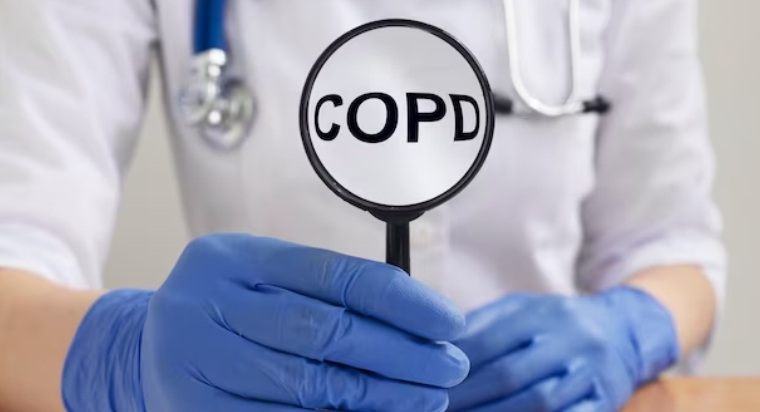How to manage the signs of worsening COPD
Chronic Obstructive Pulmonary Disease (COPD) is a progressive respiratory disease that affects millions of people worldwide. It is a respiratory disease that obstructs the flow of air making it difficult to breathe.
By 2030, COPD is estimated to be the third leading cause of death worldwide. In the United States alone, more than 16 million people have been diagnosed with COPD, and it is estimated that an additional 16 million may have the disease but remain undiagnosed. While there is no cure for COPD, early detection and management can significantly improve outcomes and quality of life.
The key to effective management is understanding the signs of worsening COPD, which can help patients seek timely medical attention and avoid exacerbations.
What are the signs of worsening COPD?
Here are the most common ones:
1. Increased Shortness of Breath
Shortness of breath or dyspnea is often the first sign of a worsening condition. It occurs as a result of damaged or narrowed airways, making it difficult for the inflow and outflow of air from the lungs.
Patients with worsening COPD may experience more frequent or severe bouts of breathlessness, even during rest or simple activities, such as getting dressed or eating. This can impact their ability to perform daily tasks and lead to a decreased quality of life.
2. Increased Mucus Production
COPD causes the airways to become inflamed and narrow, leading to increased mucus production. Inflammation causes the cells lining the airways to produce more mucus than usual. The excess mucus can then clog the airways, making it more difficult to breathe and increasing the risk of infection.
In the case of COPD, the inflammation is chronic and caused by exposure to irritants such as cigarette smoke or air pollution.
3. Chest tightness or discomfort
Chest tightness or discomfort, another common symptom of worsening COPD occurs as a result of the inflammation and narrowing of the airways.
As damage to the lung tissue becomes more severe, and the airways become more narrowed, patients may feel a sensation of pressure or heaviness in their chest, which can make breathing more difficult. This can lead to more frequent and severe episodes of chest tightness, making it difficult to carry out daily activities.
4. Wheezing
Wheezing is a high-pitched whistling sound that is often heard when breathing. It is caused by the narrowing of the airways and is a common symptom of COPD. Patients with worsening COPD may experience more frequent or severe episodes of wheezing, especially during exercise or other activities.
Wheezing can become more frequent and severe as COPD progresses. This is because the damage to lung tissue can become more severe, and the airways become more narrowed, making it harder for air to flow in and out of the lungs.
5. Increased Fatigue
COPD can cause fatigue and low energy levels, which can impact a patient’s ability to perform daily activities. The increased effort required to breathe due to the narrowing of the airways and damage to lung tissue can lead to feelings of exhaustion and can make it difficult for people with COPD to carry out their daily activities.
As the disease worsens, patients may experience more frequent and severe fatigue, even when doing simple tasks.
6. Cyanosis
Cyanosis is a bluish tint to the skin, lips, or fingernails caused by low oxygen levels in the blood. This occurs when the lungs are damaged and are not able to absorb enough oxygen from the air. This situation can lead to low oxygen levels in the blood, a condition known as hypoxemia.
Patients with worsening COPD may experience bluish lips or fingernails, especially during exercise or other activities that increase oxygen demand.
7. Swelling in Legs and Ankles
The swelling in the legs and ankles, also known as edema, is a worsening COPD symptom that can cause fluid to accumulate in the legs and ankles, leading to swelling. This is a sign of right heart failure, which can occur when the lungs are unable to deliver enough oxygen to the body.
The risk of developing right-sided heart failure increases as COPD progresses. This can lead to more frequent and severe episodes of swelling in the ankles, feet, or legs. Also, the more damage in the lungs, the more difficult it is for the heart to pump blood all over the body thereby leading to edema.
How to manage the signs of worsening COPD
Living with COPD can be challenging, but there are steps you can take to manage the signs of worsening COPD and improve your quality of life. The steps include:
- Quit smoking
- Take medications as prescribed
- Stay active
- Eat a healthy diet
- Avoid triggers
- Get enough rest
- Seek support from healthcare professionals, family, and friends
- Consider oxygen therapy or pulmonary rehabilitation if recommended by your doctor.
In conclusion, COPD is a chronic respiratory disease that can significantly impact a patient’s quality of life. Understanding the signs of worsening COPD is essential for effective management and can help patients seek timely medical attention to avoid exacerbations.
If you or someone you know is experiencing any of these symptoms, it is important to seek medical attention as a healthcare provider can determine the underlying cause and provide appropriate treatment to manage your symptoms and prevent complications.



 Translate
Translate

